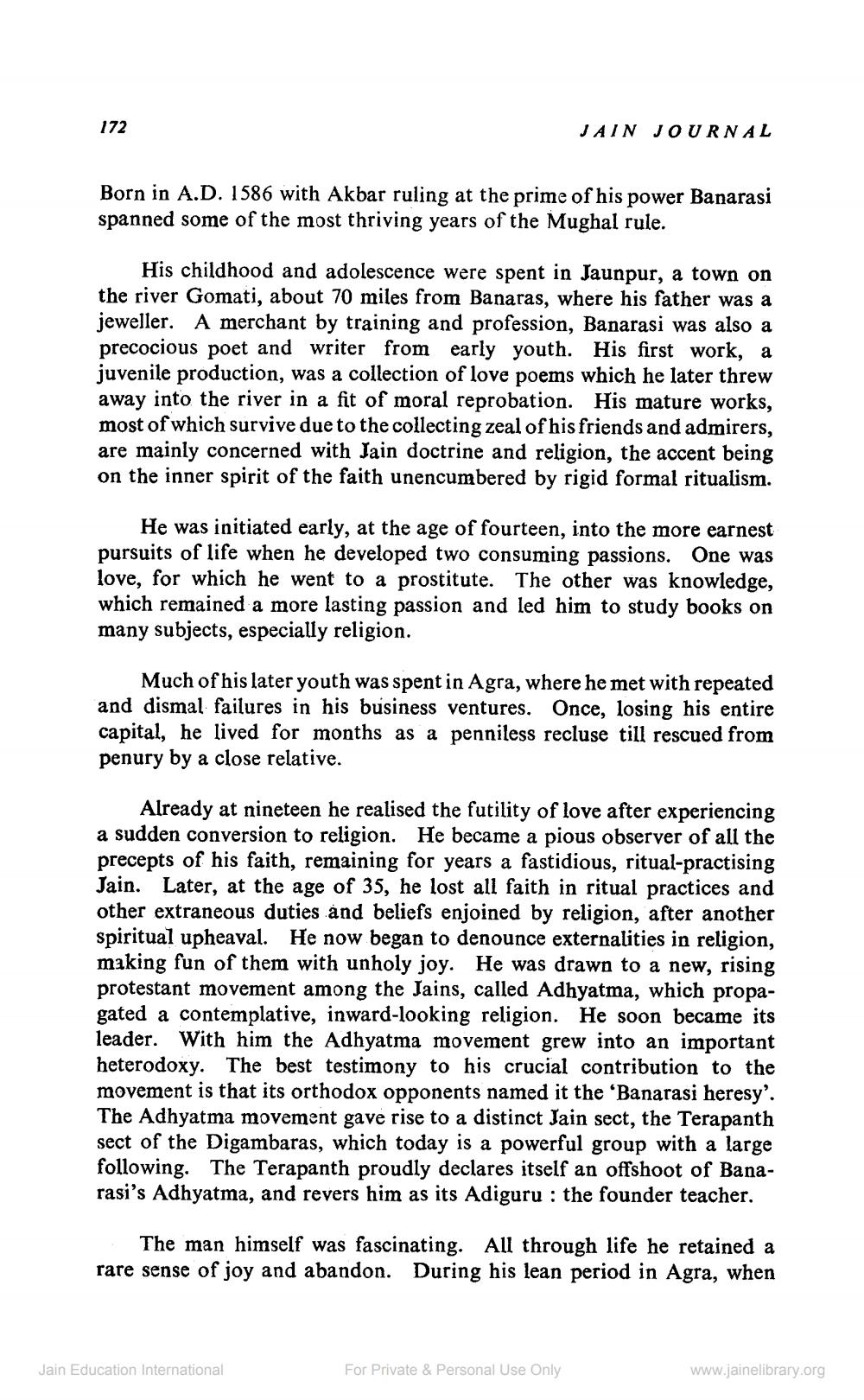________________
172
JAIN JOURNAL
Born in A.D. 1586 with Akbar ruling at the prime of his power Banarasi spanned some of the most thriving years of the Mughal rule.
His childhood and adolescence were spent in Jaunpur, a town on the river Gomati, about 70 miles from Banaras, where his father was a jeweller. A merchant by training and profession, Banarasi was also a precocious poet and writer from early youth. His first work, a juvenile production, was a collection of love poems which he later threw away into the river in a fit of moral reprobation. His mature works, most of which survive due to the collecting zeal of his friends and admirers, are mainly concerned with Jain doctrine and religion, the accent being on the inner spirit of the faith unencumbered by rigid formal ritualism.
He was initiated early, at the age of fourteen, into the more earnest pursuits of life when he developed two consuming passions. One was love, for which he went to a prostitute. The other was knowledge, which remained a more lasting passion and led him to study books on many subjects, especially religion.
Much of his later youth was spent in Agra, where he met with repeated and dismal failures in his business ventures. Once, losing his entire capital, he lived for months as a penniless recluse till rescued from penury by a close relative.
Already at nineteen he realised the futility of love after experiencing a sudden conversion to religion. He became a pious observer of all the precepts of his faith, remaining for years a fastidious, ritual-practising Jain. Later, at the age of 35, he lost all faith in ritual practices and other extraneous duties and beliefs enjoined by religion, after another spiritual upheaval. He now began to denounce externalities in religion, making fun of them with unholy joy. He was drawn to a new, rising protestant movement among the Jains, called Adhyatma, which propagated a contemplative, inward-looking religion. He soon became its leader. With him the Adhyatma movement grew into an important heterodoxy. The best testimony to his crucial contribution to the movement is that its orthodox opponents named it the 'Banarasi heresy'. The Adhyatma movement gave rise to a distinct Jain sect, the Terapanth sect of the Digambaras, which today is a powerful group with a large following. The Terapanth proudly declares itself an offshoot of Banarasi's Adhyatma, and revers him as its Adiguru : the founder teacher.
The man himself was fascinating. All through life he retained a rare sense of joy and abandon. During his lean period in Agra, when
Jain Education International
For Private & Personal Use Only
www.jainelibrary.org




